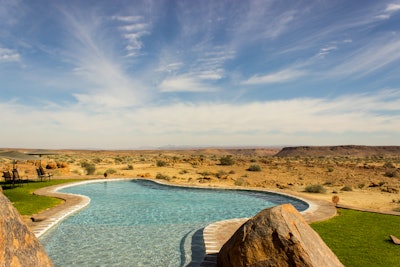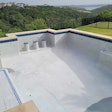
The ongoing fight to save the California swimming pool industry is growing more intense, as new and more draconian actions are underway at the municipal level, some of which seek to stop the renovation of swimming pools.
These localized, council-level prohibitions are steadily eating away at the pool market in California, one bite at a time.
For instance, in May, Ventura County banned filling new swimming pools and refilling more than 1-foot vertical water level on existing pools.
“We’ve been in a big drought for some time, and when droughts come, cities and counties and water districts start implementing stages of what they call their emergency conservation water plans,” says John Norwood, director of government relations, CPSA. “This has been going on for a while, but it’s getting more serious as the drought gets more serious.”
It’s not really the state level government that is causing alarm among pool builders, he adds — rather, it’s the 483 cities and 58 counties in 700 water districts that are implementing their own emergency conservation plans.
“A lot of these municipalities don’t have restrictions on filling new pools because of the work we did in the last drought. We had our “Let’s Pool Together” campaign, where we interacted with hundreds of cities across the state and got most of those restrictions moved,” says Norwood. “Unfortunately, there are still cities and counties that do have restrictions, and some are considering more.
“We lost our split decision in Ventura County because I testified via Zoom, and we had nobody else there — that’s the issue. I mean, when you’re dealing with city councils, and boards of supervisors, they pay attention to local businesses, local attendees.”
Recently, Norwood received notification that Thousand Oaks would be meeting to consider a similar measure. Scott Cohen, owner of The Green Scene, made the trip to city hall and waited in line for his three timed minutes to make the case for the pool industry. (Cohen has been helping CPSA in its fight because he’s a California builder who doesn’t want to see the pool industry hurt.) In his speech before the council, Cohen reiterated that “pools actually collect rainwater, and use 25% less water overall than a lawn does. When covered, they hold 90% of their water, so they don’t lose it with evaporation,” among other powerful points in the industry’s favor.
THE PROBLEM, THE ARGUMENT
This idea of restricting the use of water to fill new pools doesn’t make sense, Norwood says. For one thing, the use of water in swimming pools and spas is negligible in the bigger picture. “Pools don’t take that much water. I think Ventura County would have taken something like 4 or 5 acre-feet of water to fill all the pools permitted in any given year. That’s nothing. I mean, it’s a lot of gallons, but it’s nothing compared to how much water Ventura County uses on an annual basis.
“I mean, we understand that you shouldn’t be dumping existing pools to change water, or this or that. There’s alternatives. But to restrict the filling of new pools makes no sense because nobody can prove that it saves an ounce of water.”
According to the CPSA, a wellmaintained pool or hot tub uses significantly less water per day than the irrigated lawn it often replaces — not to mention that pool decks and hardscapes replace a good portion of backyard landscaping, further reducing water needs.
“When you take a new pool, you’re talking about, let’s say, 1,500 sq. ft. of something that’s irrigated now,” explains Norwood. “First of all, there are months with no irrigation because the pool’s being built. But when the pool gets put in, only about a third or less of that 1,500 sq. ft. is water that evaporates…you’re taking two thirds of that project out of irrigation forever, so you’re saving water. Once it’s built, once it’s full, you save about 30,000 gallons a year.”
On the other hand, these restrictions are some of the only ones that target a particular industry (and in the case of the California pool industry, a local one).
“Other restrictions aren’t putting people out of business,” Norwood says, citing limits on serving water at restaurants or doing laundry at hotels. “Nobody else is being targeted, including car washes that recycle their water, who use more water annually than it would take to fill all the new pools in any given jurisdiction. That’s just a fact.”
ALL TOGETHER NOW
The situation is becoming increasingly critical. “I think contractors just don’t understand how close we are to losing the ability to build pools,” says Norwood. “Communities are starting to adopt a higher level of drought controls. Some are denying pool permits and remodel permits if you need to remove more than 1 foot of the water to do it.”
Change will only come from representation. “There are a lot of things we can say, but if nobody is at [city council meetings] to represent the pool industry, the community just votes it in,” says Cohen. “And then once you have a few communities that decide to do that, it’s just mushrooms from there.”
Norwood places a huge emphasis on the importance of local attendees: If a pool builder wants to sit in on a city council meeting, it only makes sense to do so in their local area. “Pool politics is local,” he says. “You really need to be located in that area, to tell you the truth.”
And there is power in numbers, evidenced by recent success in Simi Valley. “We had four local pool builders there, and that really helped,” says Norwood. “We’ve won in more cities, or water districts, than we’ve lost.”
Norwood also emphasizes the importance of gaining CPSA members, who actively work to combat drought restrictions. “There are 3,600 licensed pool builders in California. We probably represent a couple hundred of them. It makes no sense for these pool builders [not to be involved]. Their businesses are going to get adversely affected in these severe droughts unless they become members, and support the association,” he says. “I think there are a lot of people who just don’t realize what’s at stake.”











































